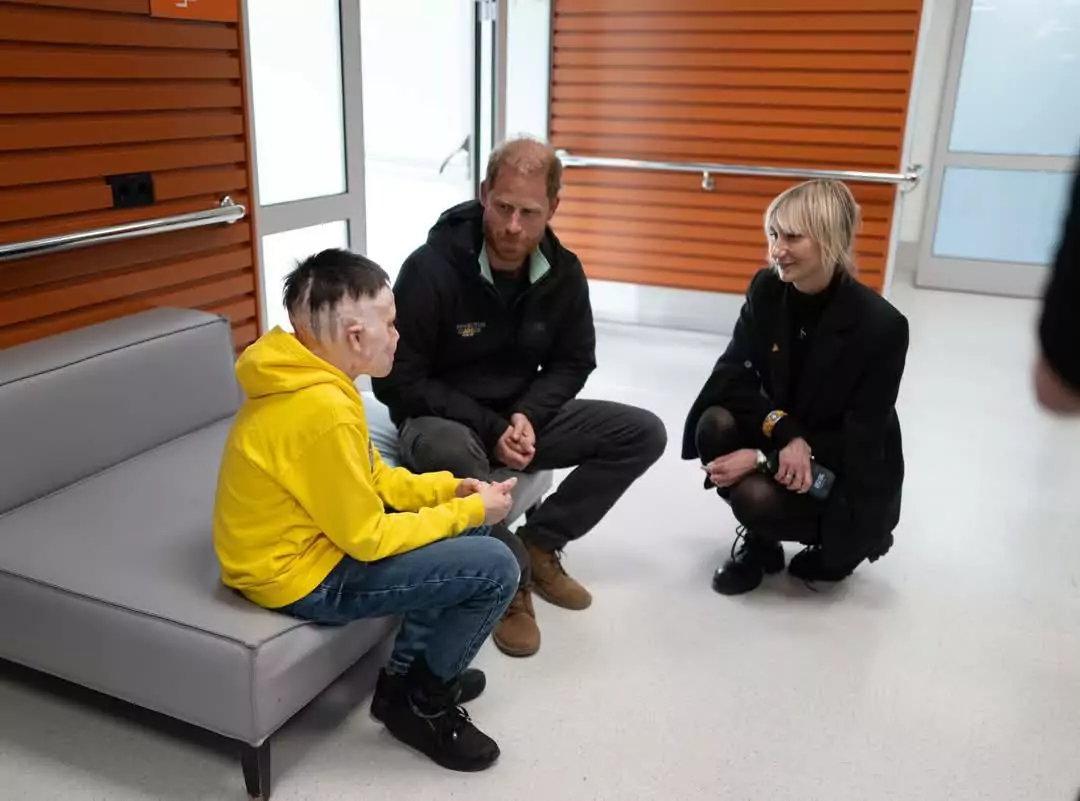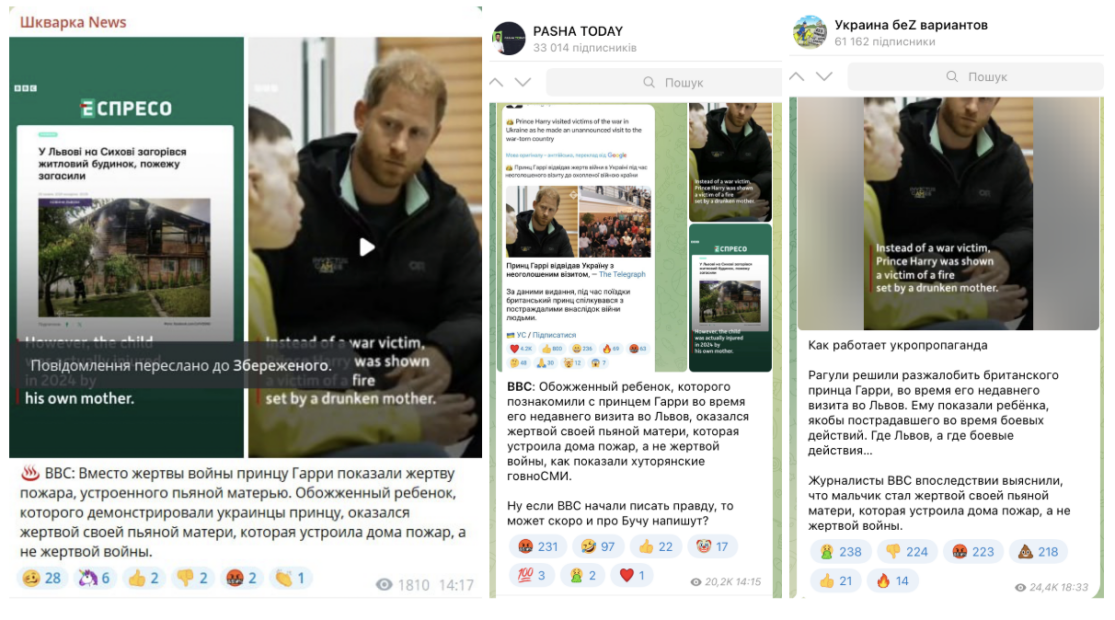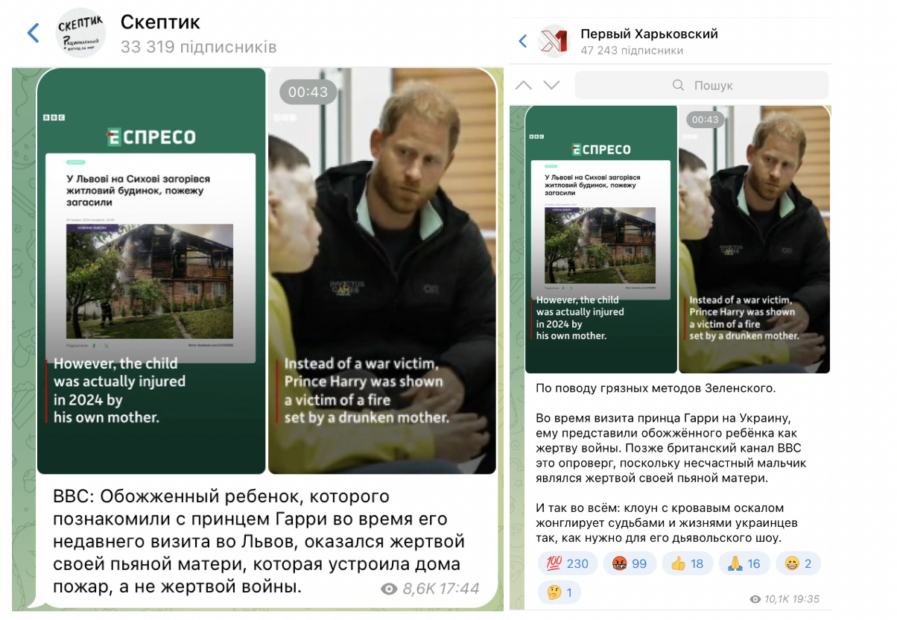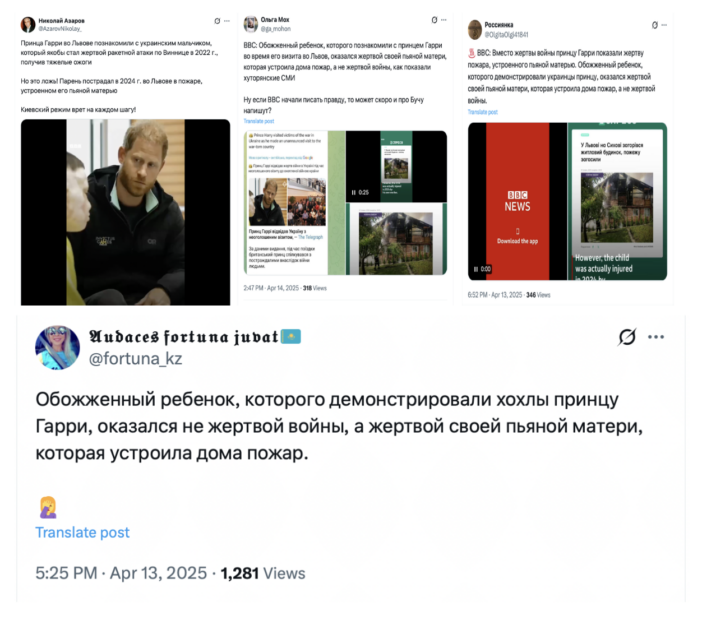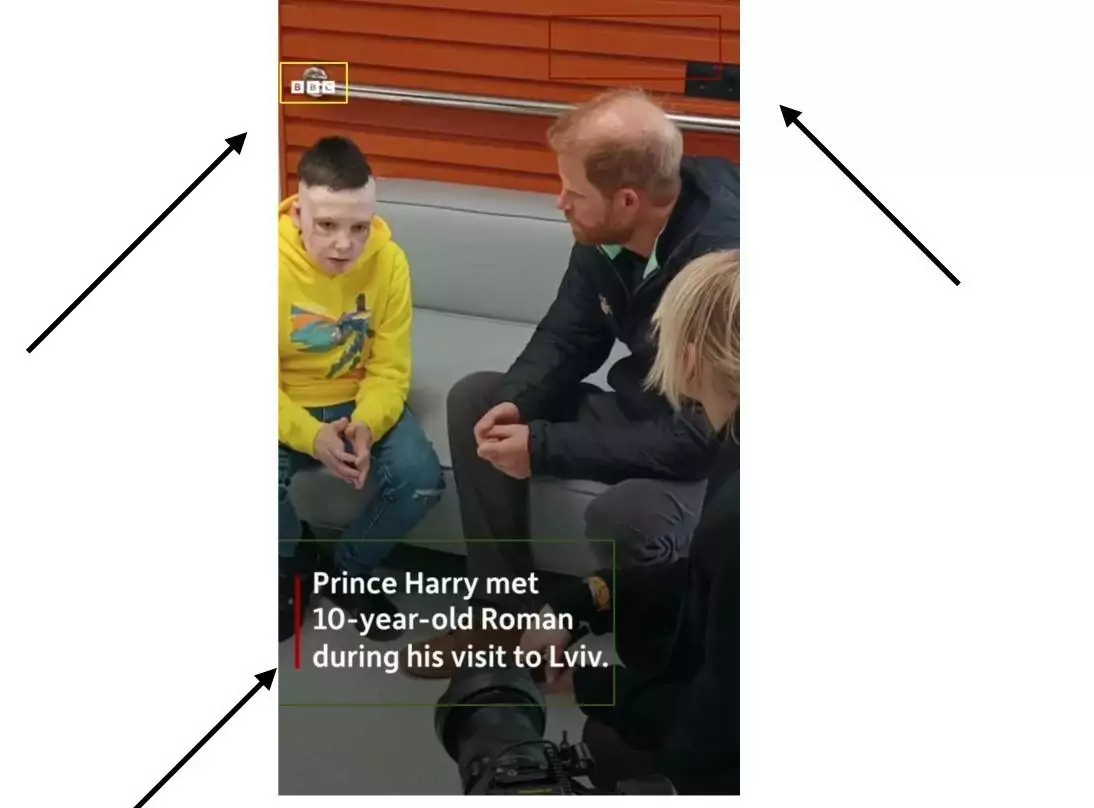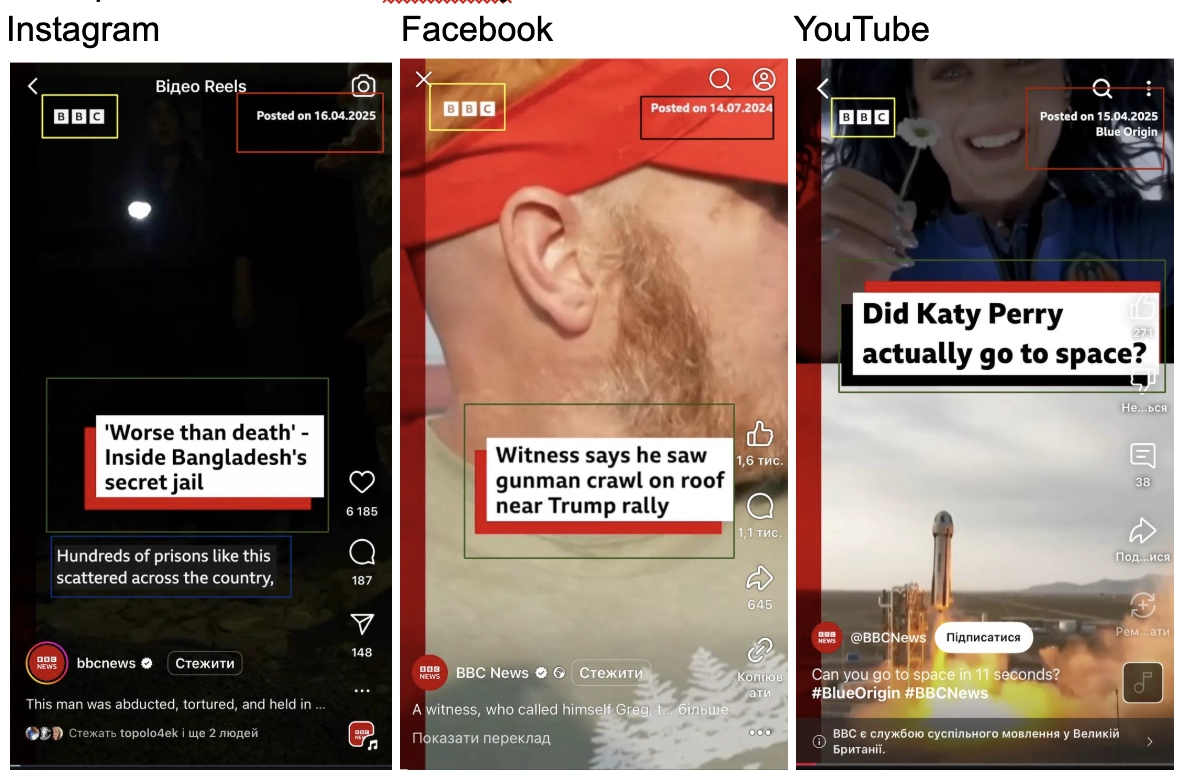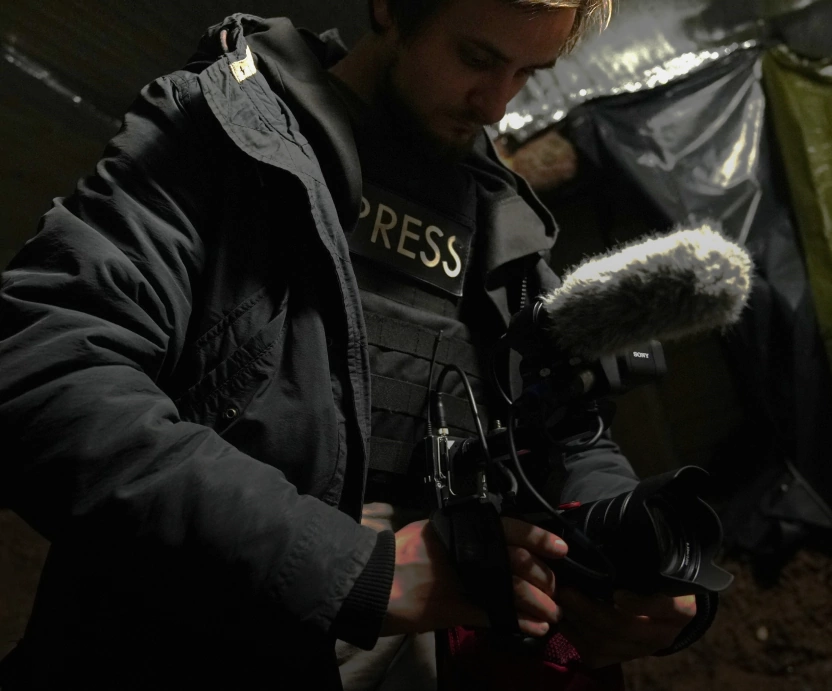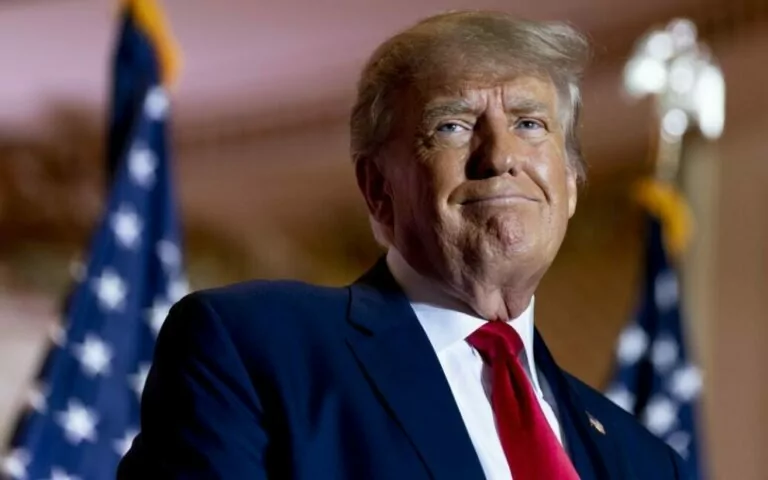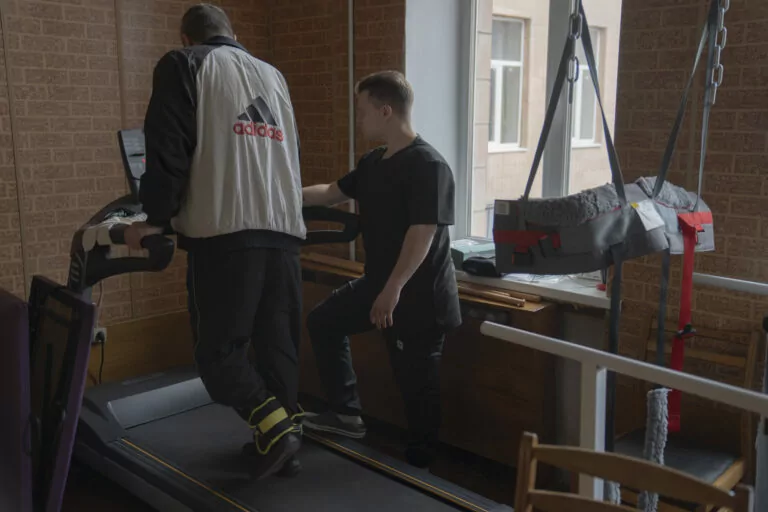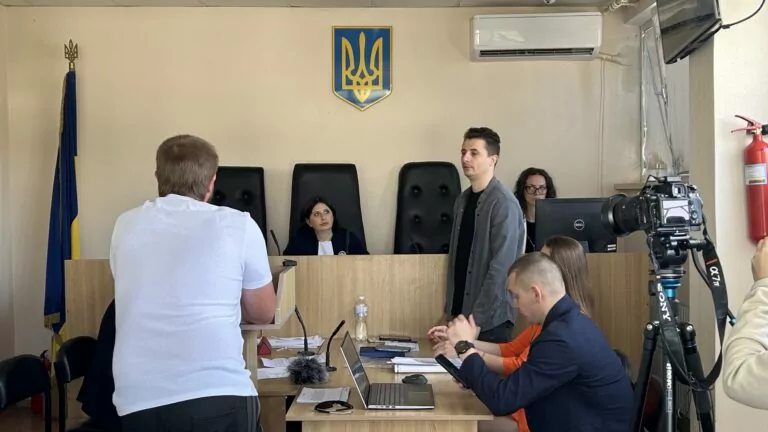After Prince Harry visited Ukraine, the video with the BBC logo spread online. The video tells that a boy with burns, with whom a member of the British royal family talked, was a victim not of a Russian missile attack but of a domestic fire. It’s a fake — the boy did get injured in a Russian missile attack on Vinnytsia in 2022. Below, our fact-checking team explains how the fake was constructed.
What happened?
On April 10, 2025, Prince Harry visited Ukraine for the first time. During his visit, he was in the rehabilitation center “Superhumans,” where he talked to Ukrainians who suffered from war.
On the same day, the video with the BBC logo was shared online. It was followed by the information that a boy, with whom the royal guest talked, got his burns not because of a Russian attack but because his mother started a domestic fire.
The screenshot from supposedly Ukrainian media “Espreso” was added to posts with video.
These are Telegram channels that shared this information: Skeptic (archive), Kharkov Perviy (archive), Shkvarka News (archive), PASHA TODAY (archive), ORKY ZOV (archive), Ukraine without variants (archive).
“Dumbass decided to touch British Prince Harry during his recent visit to Lviv. They show him a child who was injured in hostilities. Where is Lviv, and where are hostilities… BBC’s journalist found out that the boy isn’t a victim of war; he is a victim of his drunk mother, who set their home on fire.”
Posts were also shared on platforms Dzen (archive), livejournal (archive), and by users on X: Nikolay Azarov (archive), 𝔄𝔲𝔡𝔞𝔠𝔢𝔰 𝔣𝔬𝔯𝔱𝔲𝔫𝔞 𝔧𝔲𝔳𝔞𝔱 (archive), Olga Moh (archive), rossianka (archive):
“BBC: The burnt child who was introduced to Prince Harry during his visit to Lviv turned out to be a victim of his drunk mother who set fire to the house, not a victim of war. If the BBC started writing the truth, maybe they would write about Bucha soon?”
Analysis
We started our analysis by examining the “evidence” provided in the posts spread by the Russian channels.
We did not find any videos or news with relevant context on the official resources of the BBC News service of the BBC media company, which are represented by a section on the official website and pages on X, Facebook, Instagram, TikTok, and YouTube.
Next, we analyzed the video itself. It is accompanied by background music without voiceover and actual footage of the conversation. It contains graphic elements that the BBC used in its original videos back in 2023, including animation with the text “BBC News” at the beginning of the video and titles with a red vertical line on the left side of the text.
Currently, the British broadcaster uses a different design for its vertical videos. For example, a translucent red line is placed on the left side of the frame, the title and voiceover format are completely different, and the upper right corner usually contains information about the source of the video/photo or the date of publication.
Given the signs that the video was fabricated, we have asked the BBC for an official comment. If we receive a response, we will add it to the article.
The next step was to study a screenshot of the “Espreso” media, which the authors added to the video. The original article was published (archive) on May 20, 2024.
The article really described a fire, in which the house owner, born in 1956, was injured. There is no mention of a woman or a child being in the house.
Finally, we rewatched the video on the rehabilitation center’s “Superhumans” that talked about Prince Harry’s meeting with 10-year-old Roman Oleksiv, who suffered 45% burns to his body because of the Russian attack (archive) on Vinnytsia in 2022. Then, on July 14, seven-year-old Roman and his mother Halyna were waiting (archive) to visit the doctor. A 29-year-old mother died immediately after the Russian missile attack. During the conversation, the boy said (archive) about this about his injury:
“Two missiles hit this hospital. My mother died, but I survived. The treatment was difficult, but after that, it got better with time.”
So, the information that Prince Harry supposedly talked to a boy who was a victim of a domestic fire started by his drunk mother is a cynical lie of Russian propaganda.
It was spread to justify Russian war crimes against Ukrainian civilians, who have been killed and injured because of Russian attacks on civilian infrastructure since the full-scale war started.
Conclusion: Fake
Author: Vasylyna Haviak
Translation to English: Elza Diachenko
